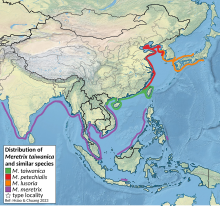
Clam is a common name for several kinds of bivalve mollusc. The word is often applied only to those that are edible and live as infauna, spending most of their lives halfway buried in the sand of the sea floor or riverbeds. Clams have two shells of equal size connected by two adductor muscles and have a powerful burrowing foot. They live in both freshwater and marine environments; in salt water they prefer to burrow down into the mud and the turbidity of the water required varies with species and location; the greatest diversity of these is in North America.

Tridacna gigas, the giant clam, is the best-known species of the giant clam genus Tridacna. Giant clams are the largest living bivalve mollusks. Several other species of "giant clam" in the genus Tridacna are often misidentified as Tridacna gigas.

Mytilopsis sallei, the black-striped mussel, is a small marine bivalve mollusc in the family Dreissenidae, the false mussels.

Mercenaria is a genus of edible saltwater clams, marine bivalve molluscs in the family Veneridae, the Venus clams.
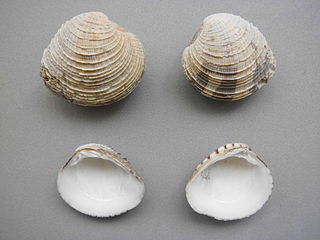
Chione cancellata, is a species of medium-sized saltwater clam, a marine bivalve mollusc in the family Veneridae, the venus clams.

Lajonkairia lajonkairii is an edible species of saltwater clam in the family Veneridae, the Venus clams.

Chamelea gallina is a species of small saltwater clam, a marine bivalve in the family Veneridae, the venus clams.
Tokubei Kuroda was a Japanese scientist and academic. He is best known as a pioneering taxonomist and malacologist specializing in Japanese marine and terrestrial Mollusca.
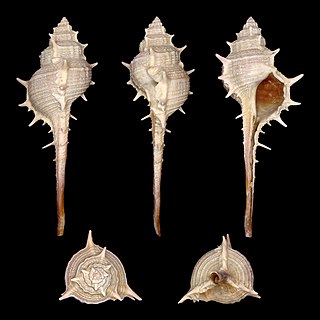
Murex trapa, common name the rare-spined murex, is a species of sea snail, a marine gastropod mollusc of the family Muricidae, the rock snails.

Ruditapes philippinarum, the Manila clam, is an edible species of saltwater clam in the family Veneridae, the Venus clams.Common names include Manila clam, Japanese littleneck clam, Japanese cockle, and Japanese carpet shell. In Japan, it is known as asari. In Korea, it is known as bajirak.

Hysteroconcha dione or the elegant Venus clam, formerly known as Venus dione, is a species of bivalve mollusc in the family Veneridae, the Venus clams.

Meretrix is a genus of edible saltwater clams, marine bivalve molluscs in the family Veneridae, the Venus clams. They appeared in the fossil record in the Cenomanian age.
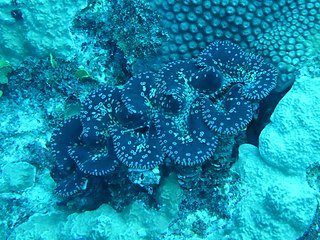
Tridacna noae, also known as Noah’s giant clam or the Teardrop giant clam, is a species of giant clam. Up until recently, T. noae was confused with the small giant clam Tridacna maxima, but is now known to be its own independent species. It has a broad distribution in the Indo-Pacific.

Paratapes undulatus, common name undulate venus, is a species of saltwater clam, a marine bivalve mollusk in the family Veneridae, the Venus clams.

Lioconcha hieroglyphica is a species of saltwater clam, a marine bivalve mollusc in the family Veneridae, the venus clams.

Gafrarium pectinatum, also known as Gafrarium tumidum, is a species of the genus Gafrarium in the family of Veneridae, order Veneroida in the bivalve class. They are edible clams. WoRMS believe the latter is the synonyms of the other one, but malocologist from Taiwan distinguish the two from the patterns of their shells

Meretrix taiwanica is a clam indigenous to Taiwan and China, it was misidentified as Meretrix lusoria until 2023.
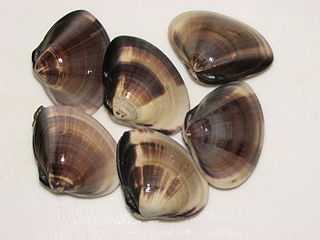
Meretrix lamarckii, also called Korean clam or Korean hard clam, is a species of saltwater bivalve in the family Veneridae. It is the second species of venerid clam where doubly uniparental inheritance (DUI) has been identified.

Chamelea striatula, the striped venus clam, is a marine bivalve mollusc of the family Veneridae which inhabits the northern shores of Europe.



